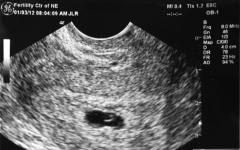Easter one of the main Christian church holidays for believers in Russia and around the world. The celebration of the Resurrection of the Lord in Russia has its own centuries-old traditions and customs. People are waiting for Easter with special impatience and inner trepidation, because it is a double joy: the resurrection of the Savior of the human race, crucified on the cross, and the arrival of spring, symbolizing the renewal of all living things. Easter has many names: "The Resurrection of the Lord", "Bright or Holy Easter", "Easter of Christ".
Easter celebration in Russia is notable for its huge number of interesting traditions, customs, rituals, preserved to this day from ancient times. Despite the fact that Easter is a Christian holiday, it has its roots in the deep past, associated with the pagan beliefs of our ancestors. In our Slavic culture, there used to be a special day - the holiday of the arrival of spring, the birth of life, which was celebrated at the end of March or at the beginning of April, when nature began to wake up after winter. There were also rituals. Among men, it was customary to kindle huge fires in order to appease the Sun and get his favor. And women chose the most beautiful girl, having undressed her, watered her with spring water, decorated with herbs, woven flowers into her hair, this ritual ended with the "spring goddess" going around the whole village with a plow, thus endowing the land with fertility, prompting vegetation to life.

Easter was celebrated in Rus' immediately after Prince Vladimir the Red Sun was baptized himself and baptized our people. We know that not all Russian people enthusiastically accepted the new religion, they fought for some time for their right to remain pagans and continued to celebrate folk holidays, but over time they were imbued with Christianity. Although, the celebration of Easter, like many other holidays of Christianity, is often accompanied by pagan rites, rituals preserved from ancient times, which have nothing to do with true faith.

But, the history of Easter throughout the world has even deeper roots. You can read about those events in the book of the Old Testament. The Pesach holiday was celebrated in ancient times by representatives of the Jewish people, after Moses brought them out of Egypt. If the name of the holiday is literally translated from the Hebrew language, it means "Deliverance". Of course, that Christian holiday should not be directly associated with the liberation of the Jews. The history, traditions of Easter of Catholics, Protestants, Orthodox are connected with the events of the New Testament and the main meaning is the triumph of life over death, which was confirmed by the immortality of Jesus Christ, who resurrected after the crucifixion.
In Catholic and Protestant countries, Easter is celebrated a little earlier than in Russia, because in Orthodoxy time is counted according to the Gregorian calendar, and the starting point is the vernal equinox. Easter falls on the first Sunday following the first full moon after the vernal equinox. The day of Easter is floating, without a specific date. Therefore, in order to know when Easter will be celebrated this year, believers look at Orthodox calendars. To observe all the traditions of the Easter holiday, Easter is made up.

Everyone knows that the last week before Easter is called "Passion", it is dedicated to the suffering that Jesus Christ endured for the human race. The most severe days of fasting fall on it, during which believers eat only bread and water, do not have fun, do not have fun, but only pray for the forgiveness of their sins. Together with the rejection of the joys of life and animal food, people are preparing for the greatest church holiday. On Holy Week, according to tradition, it is customary to clean houses, throw away everything superfluous, give the poor things that you no longer wear. On Pure Thursday, a general cleaning is necessarily carried out, both physical and spiritual. On Thursday, Christians bathed at dawn in a stream to wash away all the sins accumulated over the year. And Friday is allocated for baking Easter cakes and painting Easter eggs.

Why did the tradition of baking Easter cakes and coloring eggs appear for Easter, and what does it mean? The main Easter symbols of the holiday are colored eggs and cakes. According to tradition, they must first be consecrated in the church. These are not just delicious treats, but also symbols of the Bright Holiday, which have a deeply religious meaning, taken from the Bible. According to legend, after Jesus Christ ascended to heaven, the apostles began to put a piece of bread on the table when they ate, it was intended for the Teacher, who was resurrected. Easter cake is a symbol of that holy food.

The meeting place of the Feast of the Resurrection of Christ is the temple, where parishioners flock to the solemn service, during which the priest consecrates the Easter cakes, apiaries, eggs they brought. The Easter service starts from Saturday evening and goes until the morning, it is called "All-Night". According to tradition, it is customary to wear light-colored clothes for this service in order to hear the good news in festive attire. At midnight, the bells begin to ring, announcing to everyone around that Christ is Risen, at this moment the Easter holiday comes, and the faithful follow the church servants with banners to the procession, during which the church goes around the temple three times, and then everyone congratulates each other. This is a ritual of Christening, when the younger says to the elder: “Christ is Risen!”, And he answers him: “Truly Risen!” They then kiss each other three times on the cheeks. In the morning, returning home, people cover festive table. Easter is celebrated in a narrow family circle. Some go to the cemetery on Easter, but as the clergy say, this is not worth doing because Easter is a holiday of joy, and the cemetery is a place of sorrow, to commemorate the dead, Parents' Saturday, which comes after Easter, is highlighted. There is an expression that on Easter the deceased themselves come to visit you, and on Parental they are waiting for you at their home.

Easter should be Special attention devote to preparing the table. On the eve, believers prepare various treats that will stand on the solemn Easter table, however, due to the fact that Great Lent is still going on at this time, they cannot be tasted until Sunday. But on the Holy Holiday, Christians will be able to enjoy clear, fish treats, try pies, jelly, drink wine, treat relatives and friends.
According to tradition and Orthodox canons, Easter is celebrated for seven days - Easter week, and it ends with the day "Red Hill", in ancient times in Rus', weddings were played on it. The fact is that only in this short period of time did the peasants have free time between Strict Lent and the sowing of grain crops.
Easter in 2018 falls on the eighth of April, in 2019 on the twenty-eighth of April, in 2020 on the nineteenth of April.
The page uses the following symbols:
♈ - equinox
☺ - full moon
† - Easter
In chronology, and therefore in the history of astronomy, the calculation of Easter plays an important role. Therefore, a special page is given to Easter.
And yes, it's interesting.
What is Easter?
Easter- Christian holiday. Easter is the feast of the resurrection of Christ.
When is Easter celebrated?
The answer is very simple:
What's the catch? Why is it so difficult to determine the date of Easter? Why is the date of Easter in Orthodox calendar and the Catholic calendar usually don't match?
There are three terms in the definition of Easter three: spring, full moon, and Sunday. Each of them will have to be dealt with.
How did the Easter holiday come about?
The Gospels tell us about the life of Jesus Christ. Of these, it is known that in one of the springs in the early 30s of the first century AD, Jesus came to Jerusalem to celebrate annual holiday Passover. At the instigation of ill-wishers, He was seized by the authorities and subjected to a painful execution - crucifixion. The execution took place on the day of Passover. After the death of Jesus, His body was taken down from the cross, buried in an artificial cave, as is customary, and two days later, Christ was resurrected.
The resurrection of Christ is celebrated by Christian churches, celebrating Easter.
Adhering to the described sequence of events and having Jewish practice as a model, the holy fathers of the church decided to put the calculation of the date of one of the main church holidays on a firm historical and astronomical footing. Since the symbolism of the Jewish Passover and Christian Easter, especially in early Christianity, were closely connected, this spring holiday turned out to be the fulcrum for the founders of new calendar and religious traditions.
What is Pesach? When is Pesach celebrated?
Pesach- Jewish holiday: the holiday of the exodus of the Jews from Egyptian slavery. Passover falls on Nisan 14 and is celebrated for a week.
The Jewish calendar is based on the lunar cycle and is, in fact, a lunisolar calendar. Each month begins with a new moon (more precisely, neomenia - the first evening visibility of the young crescent of the new moon, which we will not pay special attention to further). In particular, the month of Nisan is the first spring month, it begins on the new moon closest to the spring equinox. Thus, Pesach is celebrated on the first full moon (more precisely, one or two days after the full moon) after the equinox.
So Jesus was crucified right after the full moon. (By the way, along the way, we exposed the plots of a couple of films where the death of Christ on the cross is accompanied by an eclipse of the sun: a solar eclipse can only occur on a new moon, that is, two or two weeks after Passover!) He resurrected on Sunday (two day, although Pesach and the days of the week are not actually connected in any way).
So now it's clear why Easter is celebrated on the first Sunday after the first full moon after the vernal equinox.
And everything would be very simple. But neither the equinox nor the full moon are observed by the clergy to determine the date of Easter. They are calculated by them, paschalia are built. And paschalia are calculated quite difficult. Three questions need to be addressed: when does the equinox occur? when is the full moon? when is sunday?
When is the equinox?
Easter is celebrated on the first Sunday after the first spring full moon.
IN church calendars the spring equinox always comes. Always. A-priory.
Astronomically, this is incorrect: the equinox often falls on March 20 and sometimes even on March 19, but when calculating Easter, the equinox is always on March 21.
Unfortunately, the Christian church has two simultaneously operating calendars: the so-called "old" or Julian and the "new" or Gregorian. The vast majority of Christians use the Gregorian calendar: Catholics, Protestants, and many Orthodox. The Julian calendar is used by the Orthodox, in particular the Russian Orthodox Church, which remains the main obstacle to the transition to a single use of the Gregorian calendar.
Without going into details of the difference between the "old" and "new" calendars (which in itself interesting topic), I state: at present they diverge by 13 days.
In particular, this means that March 21, the equinox according to the Gregorian calendar, is only March 8 according to the Julian calendar, and the equinox is still far away. If the full moon occurs on March 21, 22, 23, 24 ... then the Catholics will "count" it for the spring, and the Orthodox will wait for the next one. March 25, 26, 27 .... March 31 are not suitable. April 1st and 2nd too. Only on April 3 will the "equinox of the conservatives" come, after which (or on this very day) you need to wait for the full moon.
| Calendar | Equinox | |||
|---|---|---|---|---|
| Julian | Gregorian | astronomical | Orthodox | Catholic |
| Mar 6 | Mar 19 | ♈ | ||
| Mar 7 | Mar 20 | ♈ | ||
| Mar 8 | Mar 21 | ♈ | ♈ | |
| Mar 9 | Mar 22 | |||
| Mar 10 | Mar 23 | |||
| Mar 11 | Mar 24 | |||
| Mar 12 | Mar 25 | |||
| Mar 13 | Mar 26 | |||
| Mar 14 | Mar 27 | |||
| Mar 15 | Mar 28 | |||
| Mar 16 | Mar 29 | |||
| Mar 17 | Mar 30 | |||
| Mar 18 | Mar 31 | |||
| Mar 19 | 1 Apr. | |||
| Mar 20 | 2 Apr. | |||
| Mar 21 | 3 Apr. | ♈ | ||
When is the full moon?
Easter is celebrated on the first Sunday after the first of spring full moon.
It would seem that since the two calendars are shifted by about a full moon cycle, in half the cases (after April 2) the spring full moons will coincide and, therefore, Catholic and Orthodox Easter will coincide. However, this happens less often.
The fact is that full moons are also calculated and calculated differently. Calculation methods are rather opaque, and I will not formulate them pharmaceutically and precisely, but will only explain.
IN julian calendar("old", Orthodox) to determine the "official" date of the spring full moon is simple. First you need to calculate the remainder of dividing the number of the year by the number 19. 19 years is contained in the so-called metonic cycle, known from the 5th century. BC, associated with the coincidence of lunar months and solar years: after this cycle, the phases of the moon with great accuracy fall again on the same dates. The remainder calculated in this way is called the "Golden Number" of the year.
| 1995 | 1996 | 1997 | 1998 | 1999 | 2000 | 2001 | 2002 | 2003 | 2004 | 2005 | 2006 | 2007 | 2008 | 2009 | 2010 | 2011 | 2012 | 2013 | |
| 2014 | 2015 | 2016 | 2017 | 2018 | 2019 | 2020 | 2021 | 2023 | 2023 | 2024 | 2025 | 2026 | 2027 | 2028 | 2029 | 2030 | 2031 | 2032 | |
| 2033 | 2034 | 2035 | 2036 | 2037 | 2038 | 2039 | 2040 | 2041 | 2042 | 2043 | 2044 | 2045 | 2046 | 2047 | 2048 | 2049 | 2050 | 2050 | |
| GN | 1 | 2 | 3 | 4 | 5 | 6 | 7 | 8 | 9 | 10 | 11 | 12 | 13 | 14 | 15 | 16 | 17 | 18 | 19 |
|---|
Then it is enough to use the table of full moons and, using the Golden Number, determine the tabular date of the full moon for the desired year.
Interesting...
... that according to this table, for some dates, for example, March 23, old style, the full moon can never fall.
| 1995 | 1996 | 1997 | 1998 | 1999 | 2000 | 2001 | 2002 | 2003 | 2004 | 2005 | 2006 | 2007 | 2008 | 2009 | 2010 | 2011 | 2012 | 2013 | |
| 2014 | 2015 | 2016 | 2017 | 2018 | 2019 | 2020 | 2021 | 2023 | 2023 | 2024 | 2025 | 2026 | 2027 | 2028 | 2029 | 2030 | 2031 | 2032 | |
| 2033 | 2034 | 2035 | 2036 | 2037 | 2038 | 2039 | 2040 | 2041 | 2042 | 2043 | 2044 | 2045 | 2046 | 2047 | 2048 | 2049 | 2050 | 2050 | |
| GN | 1 | 2 | 3 | 4 | 5 | 6 | 7 | 8 | 9 | 10 | 11 | 12 | 13 | 14 | 15 | 16 | 17 | 18 | 19 |
|---|---|---|---|---|---|---|---|---|---|---|---|---|---|---|---|---|---|---|---|
| Mar 21 | ☺ | ||||||||||||||||||
| 22 | ☺ | ||||||||||||||||||
| 23 | |||||||||||||||||||
| 24 | ☺ | ||||||||||||||||||
| 25 | ☺ | ||||||||||||||||||
| 26 | |||||||||||||||||||
| 27 | ☺ | ||||||||||||||||||
| 28 | |||||||||||||||||||
| 29 | ☺ | ||||||||||||||||||
| 30 | ☺ | ||||||||||||||||||
| 31 | |||||||||||||||||||
| 1 Apr. | ☺ | ||||||||||||||||||
| 2 | ☺ | ||||||||||||||||||
| 3 | |||||||||||||||||||
| 4 | ☺ | ||||||||||||||||||
| 5 | ☺ | ||||||||||||||||||
| 6 | |||||||||||||||||||
| 7 | ☺ | ||||||||||||||||||
| 8 | |||||||||||||||||||
| 9 | ☺ | ||||||||||||||||||
| 10 | ☺ | ||||||||||||||||||
| 11 | |||||||||||||||||||
| 12 | ☺ | ||||||||||||||||||
| 13 | ☺ | ||||||||||||||||||
| 14 | |||||||||||||||||||
| 15 | ☺ | ||||||||||||||||||
| 16 | |||||||||||||||||||
| 17 | ☺ | ||||||||||||||||||
| 18 | ☺ |
Thus, for each year of the Metonic cycle, the date of the full moon is simply predetermined, "hammered in nails." This method is simple: there is even a technique for calculating literally "on the fingers", more precisely, according to the phalanges and the joint of the fingers of one hand - it is called vrutseleto. On the other hand, the method is not very accurate - at present, full moons calculated in this way lag behind astronomical ones by several days.
Such a paschalia is called Alexandrian.
IN Gregorian calendar, in the Gregorian paschals, the concept of full moon is used to calculate epacta is the age of the moon in days at the beginning of the year. It is calculated in a tricky way (I will not reproduce the corresponding formulas), and these calculations often (but not always!) give a result different from the calculation by the "golden numbers". Thus, even late full moons calculated different ways, may not match.
That is, for the Orthodox and Catholic Easters to coincide, the full moon must be late, and the results of the calculation of the full moon according to the "golden number" and epakts must coincide (more precisely, fit within one week).
When is Sunday?
Easter is celebrated on the first Sunday after the first spring full moon.
The question "when is Sunday", at first glance, is rather silly. Yes, stupid - from the point of view of the calendar. But not from the point of view of clerics. They also find religious subtleties here.
First, if the calculated full moon occurs on a Sunday, then that Sunday is not considered "after", and Easter is set to the following Sunday.
Secondly, if it suddenly happens that Christian Easter falls on Jewish Pesach, which, let me remind you, lasts a week, then such a day is not suitable for celebrating Easter, and it is also transferred to the next Sunday. This situation rarely happens, but, for example, in 2012, just such a case occurred: Orthodox Easter fell on April 8, fell on Passover and was shifted to April 15.
Third. At the famous Second Vatican Council in 1962, the Catholics, for their ecuministic reasons, abandoned the rule of non-coincidence of Pesach and Easter. So catholic easter Maybe come to Passover.
| Calendar | Holiday | |||||
|---|---|---|---|---|---|---|
| Jewish | Julian | Gregorian | Jewish | Orthodox | Catholic | |
| 13 | Mar 23 | 5 Apr. | ☺ | |||
| 14 | 24 | 6 | ✡ | |||
| 15 | 25 | 7 | ✡ | |||
| 16 | 26 | 8 | ✡ | † | † | |
| 17 | 27 | 9 | ✡ | ↓ | ||
| 18 | 28 | 10 | ✡ | ↓ | ||
| 19 | 29 | 11 | ✡ | ↓ | ||
| 20 | 30 | 12 | ✡ | ↓ | ||
| 21 | 31 | 13 | ✡ | ↓ | ||
| 22 | 1 Apr. | 14 | ↓ | |||
| 23 | 2 | 15 | † | |||
So
Easter is celebrated on the first Sunday after the first spring full moon.
Couldn't it be sooner?
Is it possible to calculate the date of Easter simpler and the same for everyone?
Of course you can. A number of Orthodox churches proposed a reform of the calculation of Paschal, based on the use real astronomical calculations made for the geographic coordinates of Jerusalem. The denominations did not agree on this issue.
RCP position
The RCP appeals to the miracle of the descent of the Holy Fire in the Church of the Holy Sepulcher, which happens precisely on Orthodox Easter. It seems incredible to me that the Lord is preoccupied with the calculation of the golden numbers of the year: it seems to me that He, when He wants, will then send His Holy Fire.
Thus, Catholics use the Gregorian calendar, the Russian Orthodox Church uses the Julian calendar and the Alexandrian method of calculating Paschal, while other Orthodox and autocephalous churches sometimes use their own original or compilation methods for calculating the date of Easter and other church holidays. The Greeks, for example, use the Gregorian calendar (more precisely, the New Julian, which will coincide with the Gregorian for another 800 years), but at the same time the Alexandrian principle of calculation.
There is no end in sight to sectarian disagreements.
03/04/2017 22:26:57 Mikhail
It's still unclear. Jesus Christ was executed on a certain specific day, on the third day He also resurrected on a specific specific day. And this day is celebrated on different days. And what about calendars?
07.03.2017 8:15:43 Priest Vasily Kutsenko
The fact is that in the early Christian era there were two different traditions Easter celebrations. The first tradition is Asia Minor. According to this tradition, Passover was celebrated on the 14th of Abib (Nisan) (as well as the Jewish Passover). The second tradition is Roman. Roman Christians celebrated Easter on the first Sunday after 14 Abib (Nisan). If the Christians who followed the first tradition were mostly from Judaism, then the Christians of Rome were converted from paganism and the connection with the Jewish traditions was not so important for them. The question arises - which of these traditions is more correct? The answer is both equally. Because both of them were sanctified by apostolic authority and were of the earliest origin.
Subsequently, a dispute arose between the Christian communities of Rome and Asia Minor about the date of the celebration of Easter, but no consensus was reached. Then this issue was raised at the First Ecumenical Council in Nicaea, in 325. The fathers of the council decided to celebrate Easter on the same day for all Christians according to the Roman (and Alexandrian) tradition.
03/08/2017 10:40:20 Michael
In the "Lives of the Saints" on February 23 (March 8 NS) there is this: ".. Regarding the difference between the Asia Minor and Western churches in understanding and celebrating Easter, the bishops of Smyrna and Rome did not agree to deviate each from their local custom, i.e. St. Polycarp recognized as correct the celebration of Easter by Eastern Christians on the 14th day of the Jewish month of Nisan and its dedication to the remembrance of the last supper of the Lord with the disciples and the sacrament of the Eucharist established on it, and Anikita recognized, on the contrary, the understanding of Easter, which was established in the West, as the annual feast of the Resurrection, was correct Christ and its celebration on the first Sunday after the spring full moon. Why didn’t they listen to the direct disciple of the apostles, but followed someone’s lead?
09.03.2017 23:10:57 Priest Vasily Kutsenko
I will just briefly reiterate the main aspects of the problem:
1. In the Gospel there is no exact date of the death of the Lord Jesus Christ, there is only a reference to the Jewish Passover: In two days [it was] to be [the feast] of Passover and unleavened bread. And the chief priests and scribes were looking for ways to take him by cunning and kill him.(Mark 14:1); On the first day of unleavened bread, when they slaughtered the Passover [lamb], His disciples said to Him, Where do you want to eat the Passover? we'll go and cook(Mark 14:12); and as soon as evening had come—for it was Friday, that is, [the day] before the Sabbath—Joseph of Arimathea, the famous member of the council, came(Mark 15:42-43); after the Sabbath, Mary Magdalene and Mary of Jacob and Salome bought perfumes to go and anoint Him. And very early, on the first [day] of the week, they come to the tomb, at sunrise(Mark 16:1-2).
2. The date of the Jewish Passover - 14 Nisan (Aviv) was calculated according to the lunar calendar. But the question arises - 1) how accurate was this calendar? and 2) can we say with complete certainty that the 14th of Nisan (Abiba), celebrated by Asian Christians in the 2nd c. (it was at this time that the dispute arose about the date of the holiday) fell on the same period of the year as during the earthly life of Christ (here it must be taken into account that Jerusalem and the temple were destroyed, and the tradition of calculating the date of Easter could be lost)?
3. Both Rome and the Asian churches insisted on the apostolic origin of their tradition (it should not be forgotten that Rome is the city of the apostles Peter and Paul).
4. The difference in tradition testified to the different understanding and highlighting of various aspects of the celebration of Easter in different Christian communities. But once again I repeat that both of these traditions were correct. But it was Roman and Alexandrian that became historically generally accepted. According to these traditions, Christian Easter must always be celebrated on Sunday.
10.03.2017 17:28:00 Mikhail
1. "In the Gospel there is no exact date of the death of the Lord Jesus Christ." I dare say that in the Gospel there is no exact date for both Christmas and the Transfiguration. Let me remind you once again: "St. Polycarp recognized as correct the celebration by Eastern Christians of Easter on the 14th day of the Jewish month of Nisan and its dedication to the memory of the last supper of the Lord with the disciples and the sacrament of the Eucharist established on it."
2. "In the fact that the Savior died on Friday and resurrected, respectively, on Sunday, the inhabitants of the planet are accustomed to believing from childhood. However, only two Romanian astronomers thought about the fact that the exact date of the death of Jesus is still not known. They came to grips with these questions.
For a long time, scientists from the National Observatory of Romania, Liviu Mircea and Tiberiu Oproyu, studied the Bible. It was she who was the source of the main premises. The New Testament states that Jesus died on the day after the first night of the full moon, after the vernal equinox. The Bible also says that during the crucifixion of Christ there was a solar eclipse.
On the basis of this information, the help of calculation astrological programs was involved. From the motion of the planets between AD 26 and 35, it can be seen that in these years the full moon fell on the day after the vernal equinox only twice. The first time was on Friday April 7th in AD 30, and the second time on April 3rd AD 33. Of these two dates, it is easy to choose, since the solar eclipse occurred in the year 33.
The resulting result can be called a sensational discovery. According to the New Testament and the calculations of astronomers, Jesus Christ died on Friday, April 3, at about three o'clock in the afternoon, and rose again on April 5 at four o'clock in the afternoon."
3. Rome, of course, the city of the apostles Peter and Paul. But this did not help him not to become what he represents now.
4. How can two such different traditions be correct? And yet it is not clear why Christmas, Transfiguration, Epiphany are certain constant days, as it should be logically. And the crucifixion and the Resurrection are transitory, although these were also certain and specific days?
10.03.2017 18:54:38 Priest Vasily Kutsenko
Mikhail, once again I recommend that you familiarize yourself with the work of V.V. Bolotov. He explains in great detail why exactly there was a difference in the traditions of Roman and Asian Christians, and what meaning both church communities invested in the Easter holiday.
I will only answer your question in more detail about how two different traditions can be simultaneously correct: it should be taken into account that such diversity could well exist in the early Christian period, now it may seem strange to us, but in those centuries it was the norm. For example now Orthodox Church performs only three liturgies - St. Basil the Great, St. John Chrysostom and the Liturgy of the Presanctified Gifts. Now it's the norm. But in ancient times, the church community committed its Eucharistic worship. And that was the norm too.
As for the moving and non-moving holidays, the dates of the holidays did not originate in the apostolic period, and throughout history we can observe how the dates of certain holidays could vary, both in the East and in the West. For example, for quite a long time, Christmas and Epiphany were one holiday, the continuation of which was the Candlemas. Some Christian communities celebrated the Annunciation on the eve of the Nativity of Christ. The history of the Feast of the Transfiguration is also quite complex and interesting.
The ancient Christians emphasized the symbolic side of the event rather than insisting on historical accuracy. After all, even the tradition of Asian Christians to celebrate Easter on Nisan 14 (Aviv) is not historically accurate. Nisan 14 is the first day of the Jewish Easter, and judging by the Gospels, Christ died and rose again not on the Easter day itself. But the ancient Christians saw important symbolism here - the Old Testament Easter is replaced by the New Testament, God, who freed Israel from slavery, is now freeing the entire human race. I repeat once again that all this is described in great detail by V.V. Bolotov.
11.03.2017 13:05:05 Mikhail
Yes, I understand why there was a difference in traditions, in calendars, in full moons and equinoxes. It is not clear to me why they began to become attached to these full moons, equinoxes, when an event occurred that could not be overlooked: a three-hour eclipse of the sun? After all, Dionysius the Areopagite noticed and it is known when he noticed and when he lived. It was a specific day. And there was never another three-hour solar eclipse. And it could not be all over the earth. Why was this day not taken as a basis? Here's what I don't understand.
07.04.2019 17:12:47 Site administrator
Who told you, Konstantin, that you can guess at the Annunciation? And heresy, by the way, is a distortion of Christian doctrine - that is, something that arises in the mainstream of theology. And fortune-telling is simply demonic, incompatible with church Christian life, either on the Annunciation or on any other day.
04/07/2019 21:17:21 Leo
Yes, Konstantin, this is a gross superstition! Sin, it remains sin even on especially revered days. This superstition was invented in order to desecrate the holiday with fortune-telling and other unholy things. Sin is always sin and virtue is always virtue. It’s impossible to say that today is the Annunciation and I won’t wash the floor, they say it’s impossible, but I’ll spend this day not in prayer, but in idleness, or even worse in drunkenness. These bans on household chores are conditional, they were established by the Church, so that hard-working peasants were freed from their work in order to be able to participate in long festive services, and this is to save the soul!
If our grandmothers clearly understood when the Bright Sunday would be celebrated, then we will learn about this from the Internet. And we are very surprised why Christmas, the Annunciation, the Savior are celebrated every year on the same day, and the day of the celebration of Easter changes every year. What does it depend on and how to calculate it?
Why do we celebrate Easter on different days?
There is a long-standing and common rule for all religions: Easter is celebrated on the first Sunday after the first full moon. And the first full moon follows the day of the spring equinox - March 22.
IMPORTANT. There are two exceptions to the single rule for celebrating Bright Sunday:
The first full moon falls on Sunday - Easter is postponed to the next;
. Christian Easter is not celebrated on the same day as Jewish.
We are guided by the lunar calendar, which is 354 days (in the solar - 365 or 366 days if the year is a leap year). It is also important to understand that the lunar month consists of 29.5 days, so the full moon occurs every 29 days.
It turns out that the first full moon after the vernal equinox (March 21) occurs on different days, which is why the date of Easter is shifted.
IMPORTANT. Since the vernal equinox falls on the night of March 21-22, Easter is celebrated no earlier than April 4 and no later than May 8.
Determination of the date of Easter celebration by the formula
This simple formula was proposed by Carl Gauss in the early 19th century:
1. The year (its number) in which you need to find out the date of the Great Day is divided by 19. The remainder \u003d A
2. Divide the number of the year by 4 = B
3. The number of the year divided by 7 = C
4. (19 * A + 15): 30 = number and remainder = D
5. (2 * B + 4 * C + 6 * D + 6) : 7 = number. Remainder = E
6. D+E<= 9, то Пасха будет в марте + 22 дня, если >, then in April: the resulting number is 9
Why Easter is celebrated on different days in different religions
There have long been calls to celebrate the Catholic and Orthodox Easter on the same day, because these churches produce chronology according to different calendars (Orthodox - according to the Julian, and Catholics - according to the Gregorian).
In 2017 - an exception, and we celebrate Easter on the same day - April 16th. Here's how it's going to be in 2018 and beyond.
The reason for this difference goes back to the distant year 325, when the First Ecumenical Council decided the rule for calculating the day of Easter: in Rome (for Catholics) - the spring equinox on March 18, in Alexandria (Orthodox) - on March 21.
IMPORTANT. With the Jewish Passover (Pesach), everything is much simpler: it always, every year, comes on the 15th day of the month of Nisan. This is the date of the exodus of the Jews from Egypt, and the beginning of the month in lunar calendar New moon appears to the Jews, but the lunar month lasts - 28 days.









